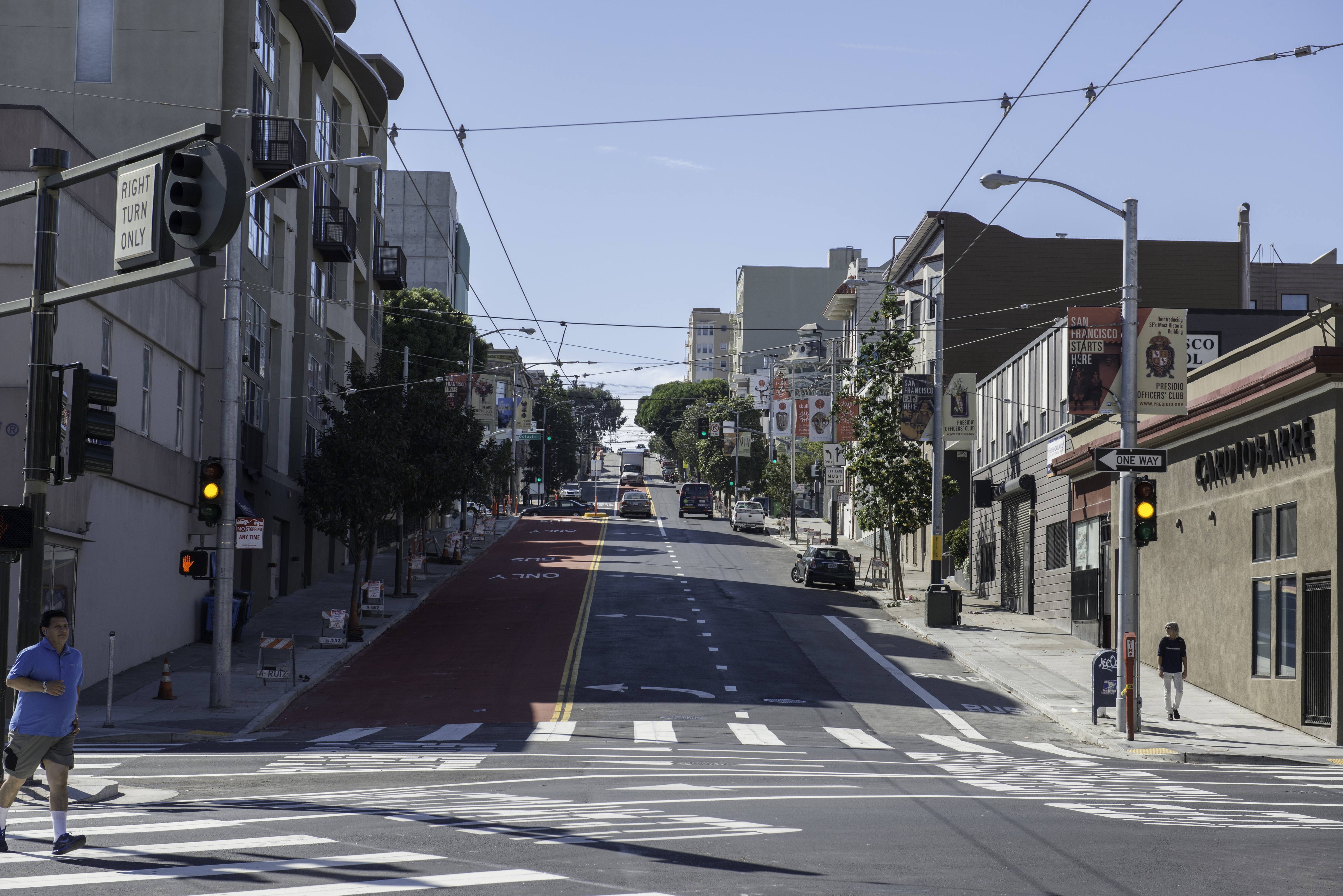Gateway treatments that clearly prohibit wrong-way or private vehicle entry at intersections—especially at the beginning of the contraflow segment—are essential to safe and functional operation of contraflow lanes. Forced turns may be marked through the intersection or guided with hard barriers. Wide cross streets provide smooth bus transitions.
Contraflow transit lanes are demarcated by solid double yellow lines (when hard barriers do not separate the lane from opposing traffic).

Haight Street, San Francisco (credit: SFMTA)
Multiple routes can be consolidated using a contraflow lane to move buses through congested corridors.
Contraflow bus lanes can employ TSP to activate the signal when approaching.
Contraflow lanes should be painted red to discourage vehicles from entering and to alert pedestrians to the presence of a transit lane with vehicles coming from an unexpected direction.
Prohibit or separate left turn phases at intersections, depending on bus and vehicle turning volumes.
Give transit vehicles adequate space to operate safely: while curbside lanes can be as narrow as 11 feet, wider contraflow lanes may be desirable given widths of travel lanes in the opposing direction.
“Hard” barriers (e.g. concrete curb, median strips, bollards, or safe hit posts), or “soft” barriers (e.g. rumble strip or striped buffers) can be used to make the contraflow lane more legible. Wider barriers can act as pedestrian refuge islands.
Read More+

Washington St, Boston
When turning movements across contraflow lanes are restricted, an opportunity to provide a low-stress, bi-directional protected bike lane emerges. Refer to the Urban Bikeway Design Guide for additional design information.
Buses can be re-routed onto a contraflow lane to eliminate the need to make sharp turns, especially through busy crosswalks with poor sight lines—one of the most significant safety conflicts for buses.
Carefully consider pedestrian behavior, enacting measures to discourage pedestrians from entering the roadway without looking, since buses may be coming from an unexpected direction. Pavement markings, audible warnings, and fencing (in limited instances) may improve pedestrian safety.
Contraflow lanes preclude inclusion of street parking or bus bulbs at the curbside in the contraflow direction.
Contraflow lanes must be operated 24 hours, or may generate confusion and conflicts.